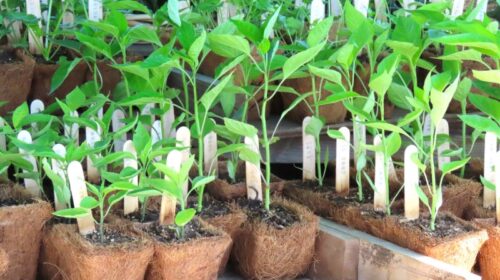Winter Worry: Post-fire Debris Flows
According to Kent Edler, assistant director of the county public works department, the fire burned the upper soil layers, creating water-repellent soil. Steep, burned, and denuded slopes deposit rocks, soil, and trees into drainages. Water will pocket and pond in areas where tree roots burned out. Water that used to flow underground might now flow overland. Debris can alter stream flow paths and increase erosion.
After these changes, this is what can happen:
- Rainfall saturates loose soil and rock, creating a moving mass with trees and other debris that travels downslope.
- The steepness and length of slope has an impact, as does how regular rainfall is, and how intense it is. Rain intensity can increase at mountain summits. 1/4 inch of rain over 15 minutes is enough to start a debris flow.
- Debris flows can travel more than 30 mph, destroying everything in their path for miles.
Risk Reports
The post-fire Watershed Emergency Response Team (WERT) preliminary report indicates a high probability of debris flows.
After this preliminary report, the WERT team stayed in the area to do a more detailed assessment to identify high-risk areas. Working with geologic teams from multiple agencies, they mapped areas and homes that are at risk. From that, more detailed report, the sheriff’s department and Cal Fire will develop evacuation plans. These plans, including evacuation routes, will be posted on the county website. On homepage, look for the banner on fire recovery. In that area, one tab says debris/mudflows. The maps will be there, and may also be in the evacuation tab.
You can download the WERT report at https://www.slvwd.com/sites/g/files/vyhlif1176/f/uploads/czu_lightning_complex_wert_final_10-6-20.pdf
RCD Resources
The Santa Cruz Resource Conservation District has done a series of informative videos and are sponsoring neighborhood site visits from experts from the UDSA Natural Resources Conservation Service. I went to one of these visits in my neighborhood. Here are some things I learned:
- Runoff will probably double. We might see higher flows and more slope erosion.
- But things are not as bad as they look in many areas. We still have root systems, hard wood, and a canopy in some areas—all of which work to slow the force of raindrops and protect the land against debris flows.
- Woody plants are best to hold the soil—bushes and trees. Oaks have deeper roots and will hold soil the best. Even burned plants can serve the same purpose. So, don’t clear or cut down branches just yet. 95% of trees with only heat and smoke damage can recover.
- Try not to disturb soil if you don’t have to. That makes it more likely to slide.
- The forest layer has a seed layer that will sprout after the first rain. Walking on it, clearing it, or covering it with mulch will prevent the seeds from sprouting.
- Some soils are more prone to become water-repellant than others. Sandy soil is generally worse. You can test for it by dropping a little water on the soil to see if it beads up.
- A lot of plastic culverts melted or were damaged by heavy firefighting equipment. If you see damaged culverts, notify the public works department.
There are things you can do to prepare:
- Maintain clear waterways. Prepare roadside culverts, especially along dirt or gravel roads. Flatten out the bottom so the water will not erode the road as much. Pound in a stake at the top of steep runs to catch larger debris. Monitor and maintain these stakes and remove debris to keep culverts clear. Let professionals remove large debris in stream channels.
- You may need to repair or enlarge existing drainage systems, or create backup systems.
- If you know of an area that “ponds” before running off, it would help to deepen that pond since it will fill more rapidly this year with sediment.
- Firebreaks or dozer lines can create problems after the fire. Spread soil out to restore natural “sheet” water flow. Scattering cut brush over the surface, no more than knee high can help. Stomp on it to break it up.
- Place fiber rolls and straw wattles around burned homes to prevent flow of toxic debris and sediment.
- Planting native plants at the end of winter will help with the next winter.
Jute netting, plastic sheeting, sand bags, straw wattles, hydro-mulching, and seeding will not stop debris flows. Plastic, for example, can increase the speed of flow, plus it kills the roots and seeds under it that could regenerate.
Soil erosion will accelerate sediment flows downstream from burn areas. Changes in the upper watershed will change flow and create new channels and flow paths. Use native or biodegradable materials for sediment management. There are online tutorials to tell you how to install them properly.
Hire a professional before you install a sediment barrier. RCD has a list of professionals they recommend. Depending on the size of the system and how close you are to a waterway, you may also need to get permits. Check before you start.
RCD Santa Cruz has some good information on post-fire hazards and recovery at http://www.rcdsantacruz.org/post-fire?fbclid=IwAR0BpGdhos9tkU6rDrLdaK-5c5UVq5fCLvTecwH0EwVG6iwfkrWNxYQwJZQ
Or www.rcdsantacruz.org/post-fire for more.
Plan Ahead
The county is doing multi-agency coordination, working with National Weather Service on rainfall predictions. Edler says the county flood control manager used to work at the National Weather Service and is talking to them twice a week to get long-range warning on approaching storms. They plan to get warnings out 24 hours in advance.
When I asked what his main advice was, Edler said, “Don’t wait to evacuate. A debris flow is not something you can outrun. Make a plan if you’re in an evacuation area. Have valuables packed up, and have pets to go. Put things in plastic tubs so you can grab them quickly. Scan important papers and put them on thumb drives.”
Since cell service is uneven in the mountains and, if power goes out, landlines may go too, it’s hard to get orders out. Edler suggested residents get a hand-cranked weather radio. He also urged everyone to contact friends and neighbors and make sure they got the warnings and orders.
“Monitor the situation. Watch weather predictions. Check the county website. Sign up for emergency alerts. Know where you’re going to go. If you know there’s a storm coming and you feel unsafe, get out.”
When asked how people can afford to evacuate multiple times this winter, Edler said the county is working with Cal OES to set up evacuation centers. He also noted that, once there’s an order, FEMA will pay evacuation expenses. Finally, he suggested that people in high-risk zones register with FEMA before an event. Here’s how:
- Online at disasterassistance.gov
- Download the FEMA app to a smartphone or tablet
- Or call the FEMA Helpline at 800-621-3362




